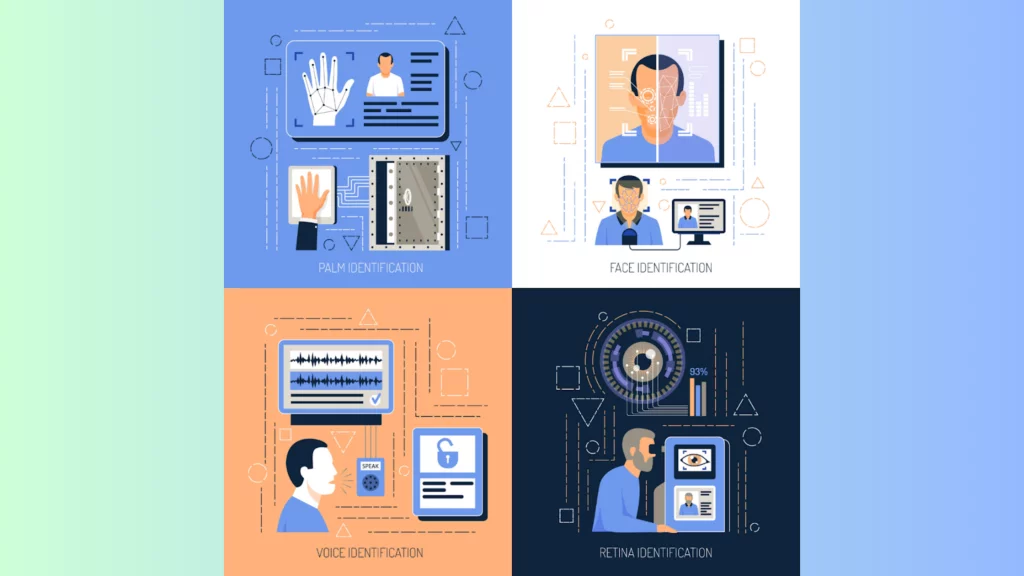
With the use of behavioral biometrics technology, security teams can examine customer behavior patterns and distinguish between legitimate and fraudulent users. It examines how a user interacts with a device, considering variables like keystrokes, mouse movements, touchscreen interactions, gait analysis, cognitive biometrics, and more.
But it’s not the same as physical biometrics, which uses human traits like fingerprints or iris scans. Smart device intelligence and digital identity solutions are becoming increasingly popular among businesses searching for practical fraud prevention tools.
These solutions allow businesses to identify multiple patterns that may point to fraud while recognizing good users through trusted devices, locations, and digital footprints.
Even with the great effectiveness of these technologies, fraudsters are still looking for ways to get around even the most sophisticated and complex fraud prevention systems.
One such tactic is social engineering, where the victim is tricked into approving a transaction for the fraudster. Behavioral biometrics is gaining popularity because it provides an additional skin of security against these threats without complicating the customer journey, among other reasons.
Behavioral Biometric Types
Body movement: Also referred to as kinesthetics, this category examines how a customer makes specific body movements, including walking, standing, and using a device. Everybody walks differently, holds a mobile device differently, and positions their bodies differently. For example, body position can be used to understand how the body weight is distributed, while gait analysis can reveal information about the consumer’s walking speed and step count.
Voice inputs: It is employed to examine the patterns resulting from changes in speech patterns.
Device-oriented: Analyzable imprints are left behind when a customer interacts with a device. Keystrokes, use of mobile devices, cursor movement, typing speed, and style are some examples of these imprints.
Types Of Biometrics
The three main types of biometrics are:
Morphological biometrics
Morphological biometrics focuses on the distinctive physical characteristics of your body. Security scanners can be trained to identify veins, ears, and the previously mentioned face and fingerprints.
Biological biometrics
This kind uses DNA recognition and necessitates the collection of bodily fluids such as blood samples.
Behavioral biometrics
This category focuses on identifying individual differences in behavior patterns. Many people are unaware of how distinctive their voice, handwriting, or gait are, but security systems can be trained to use these indicators to identify you.
As you’ve undoubtedly noticed, morphological biometric authentication is currently the most widely used type; biological biometrics, on the other hand, is generally reserved for high-stakes situations due to its invasiveness.
Use Cases of behavioral biometrics
Prevention of Fraud
Although behavioral biometrics is a relatively new technology, many individuals and organizations have already adopted it for various uses. Detecting and preventing fraudulent activities is one of the most popular uses of behavioral biometrics in cybersecurity.
By observing how a user interacts with a device and comparing it to past behavior patterns, it can be used, for instance, to identify unauthorized access attempts. The system can identify suspicious activity and take appropriate action to stop it if the behavior deviates from expectations.
Productivity
Behavioral biometrics is used in the workplace to boost productivity and efficiency, in addition to its use in cybersecurity and mobile banking. It can track worker performance and pinpoint areas in which they require development.
The system can identify patterns of behavior linked to low productivity, such as taking frequent breaks or spending excessive time on non-work-related activities, by monitoring how employees use their devices. Using this data will give specific training and support, which will help increase overall efficiency and productivity.
A false positive, on the other hand, might cause the system to mistakenly identify a malicious user as the legitimate one. Lastly, there’s the financial aspect since implementing a behavioral biometrics system can be costly. This covers the cost of acquiring and setting up the required gear and software, as well as the cost of employee training and user support.
eCommerce
Due to their always-on nature, eCommerce platforms must provide their customers with a flawless online experience; otherwise, they risk losing their market to competitors and experiencing customer churn. Personalization is a factor that eCommerce platforms also consider, using consumer interactions to highlight relevant and exciting products.
Financial institutions
By continuously monitoring a customer’s behavior, financial institutions can confirm a customer’s identity at any time during an active session—not just during the registration or login phases. This improved visibility makes it easier to identify malicious activity and quickly take the necessary countermeasures.
Top players in the behavioral biometrics industry
Let’s quickly review some of the leading players in the market and their offerings if behavioral biometrics is something you might be interested in implementing:
Biocatch: Using network analysis, device fingerprinting, and behavioral insights, Biocatch provides enhanced fraud protection.
SecureAuth: To generate user profiles, their MFA tool examines keystrokes, mouse movements, and other actions.
LexisNexis: The LexisNexis BehavioSec solution aims to lower fraud, complexity, and consistency by enhancing trust, customer experience, and business.
Challenges
Although behavioral biometrics has many advantages, certain risks and difficulties need to be taken into account. Since the technology collects and analyzes sensitive data about an individual’s behavior patterns, privacy is one of the primary concerns.
There is a chance that this data will be utilized maliciously for things like profiling or identity theft. The accuracy of behavioral biometrics presents another difficulty.
Even with the recent significant advancements in technology, there remains a chance of false positives or false negatives. An injury or illness, for instance, could cause a false negative and prohibit the person from using their device or account due to a behavior change.
Conclusion
Behavioral biometrics is emerging as a powerful cybersecurity weapon, offering a unique and dynamic approach to authentication and security.
This technology analyzes an individual’s behavioral patterns, such as keystroke dynamics, mouse movements, and other interaction behaviors, to add an extra barrier of protection against unauthorized access and cyber threats.
As the digital world evolves, incorporating behavioral biometrics into cybersecurity strategies can enhance defense mechanisms and provide a robust safeguard against cyber attacks.
FAQs
How is behavioral biometrics different from traditional biometrics like fingerprints?
Traditional biometrics rely on physical characteristics like fingerprints or iris scans, whereas behavioral biometrics analyze behavior patterns, making them more dynamic and adaptable to changing situations.
Is behavioral biometrics more secure than traditional authentication methods?
Behavioral biometrics offers enhanced security because it assesses real-time user behavior, making it more resistant to impersonation or fraudulent activities than static credentials like passwords.
Are there privacy concerns associated with behavioral biometrics?
While behavioral biometrics primarily focus on patterns rather than personal data, privacy concerns may arise. Organizations must implement strong privacy policies and ensure transparent communication about usage and data collection with users.
How does behavioral biometrics contribute to preventing account takeover attacks?
Behavioral biometrics can effectively detect anomalies in user behavior, helping identify potential account takeover attempts. The system can trigger alerts or require additional authentication steps if a user’s behavior deviates significantly from their usual patterns.
Can behavioral biometrics be integrated into existing cybersecurity systems?
Yes, behavioral biometrics can be integrated into existing cybersecurity systems. Many solutions are designed to work seamlessly with other authentication methods, providing a layered approach to security.
Which industries can benefit the most from opting to use behavioral biometrics?
Industries that emphasize cybersecurity heavily, such as finance, healthcare, and government, can significantly benefit from behavioral biometrics. However, any sector that prioritizes strong authentication and data protection can find value in this technology.



